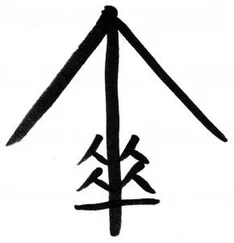Archaeologists told us that the cataclysmic end of the world prophesied by the ancient Maya to occur in 2012 would be brought about by Planet X, the legendary Nibiru—meaning “ferry boat” in Sumerian—which would cross the orbit of the Earth once every 3,630 years as it careened along its long elliptical journey around the sun. Its intense gravity would lead to shifting tectonic plates, deviation in the Earth’s magnetic poles, earthquakes and tsunamis, climate change, and volcanic eruptions. Humanity would thus be ferried into a new era.
The Little Astrology Prince of Hong Kong told us, in his dulcet voice, that Venus retrograde was over. The key thing to understand about Venus retrograde was that it was always going to be over . It gave you a chance to think about relationships that no longer had meaning, and to stop maintaining them out of habit.
Of course, humanity did not enter a new era in 2012—at least not on my timeline. Instead, the human race experienced a transformative event in the twenty-third century. A large asteroid nicknamed “the Wanderer” (about the size of Shanghai), after a long journey through the vastness of space, was captured by the gravity well of the Earth-Moon system and eventually stabilized itself at one of the Lagrange points. The Earth, from then on, had a second moon, which was called the New Moon.
Humans, a species prone to romanticism, began to contemplate subtle changes in themselves once they had become habituated to new tidal patterns and new heavenly sights. Women’s monthly cycles grew chaotic, and moods swung to extremes. Tens of thousands of fetuses stopped developing due to hormonal imbalances induced by the New Moon—a phenomenon described as “the dark side effects of the New Moon.” An invisible force began to influence the development of the human race.
Some people exhibited strange allergic reactions on nights when the New Moon was full. Eerie patterns appeared on their skin, muscle fibers tensed, pupils dilated, and their minds became confused and extremely aggressive. They would tear off their clothes, and run naked on all fours through city streets or the wilderness, as though returning to primitive worship of totemic animals. Subsequent examination of these individuals revealed that branches of their Y chromosomes still retained vestiges from the earliest stages of human evolution. After filtering for such signs in the DNA profiles of the population, a classified marker was added to the files of individuals with such genes.
Due to antidiscrimination legislation, their identities were kept secret; however, they were required to take suppressant medication and to wear special light-filtering contact lenses to counter the awakening effects of the New Moon. Some urban youths saw this as a new trend, and held transformation parties on full New Moon nights, where they turned into beasts with the aid of drugs and machinery and engaged in mass orgies.
The growth cycles of crops and livestock also changed, and astronomers had to work hard to devise new months, solar terms, and calendars. They became so complicated that it was impossible for anyone to understand or to derive based on simple astronomical observations; instead, farmers and farming machines had to rely on constant official updates.
The truly shocking new phenomenon involved those who were conceived during the full New Moon, known as the “New Mooners.”
Scientists never could explain the specific role played by the light of the New Moon at the moment when the sperm fertilized the egg or during cell division. No satisfying explanation emerged through analysis of the light spectrum, gravity, magnetic field, or any other possible factor. The only thing scientists knew was that the fetuses in the womb were developing into a new population distinct from all known human populations. A terrified humanity came to the conclusion that the normal fetuses whose development had been halted by the New Moon previously had perhaps been the victims of evolutionary competition against this new race.
Still, over 97.52 percent of the parents of such fetuses chose to carry them to full term, regardless of whether they would turn out to be angels or demons.
The New Mooners were not too different from normal humans in physical appearance, other than a change in the refractive index of the epidermis that gave their skin the sheen of plastic or thin membranes. Their metabolism, however, was three to five times slower than normal humans, which meant that they were also exceptionally long-lived. Most suffered mild depression, which caused many parents to worry that they would commit suicide. But after long observation and understanding, people came to realize that the depression-like symptoms were really the effects of a mental barrier that allowed them to filter out the information overload of the external world and to reduce cognitive load and mental stress. The New Mooners needed to focus their attention on a far more important problem, a problem that would require the efforts of thousands of generations.
The problem was this: the New Moon, which they viewed as a creation god, was going to be inexorably worn down by the passage of time. As the stability of the gravitational system decayed, the New Moon would depart from the Lagrange point and, pulled by gravity, fall onto the surface of the Earth, slowly and poetically destroying everything.
They wanted to save the New Moon.
NEOTENY
At the beginning of the twenty-first century, people thought of it as a mental illness, and specialists called it “Peter Pan syndrome.” Though these individuals were in their thirties and forties, they refused to grow up, instead speaking and behaving immaturely as though they were living the fantasy of Neverland. They were terrified of reality, shied away from competition, avoided responsibility and duty, fled from commitment by constantly changing partners, and sought refuge in the illusory joys of drugs and alcohol.
They attributed all these symptoms to overly protective families, and some even resented their parents for how much they’d indulged them in childhood.
Like our age-old pursuit of beauty and eternal youth, this development was but another tiny step on the ladder to the next stage.
In the middle of the twenty-second century, a developmental disorder that slowed down growth began to spread. Patients’ biological clocks seemed to tick at a pace many times slower than normal, and secondary sexual characteristics did not develop until they were in their thirties. Menopause and andropause were correspondingly delayed. Scientists came up with the explanation that since human lifespans had been extended by various technical measures to exceed 150 years, it was not surprising that youth would also last longer. Numerous literary and multimedia works celebrated the long youth, and patients with the developmental disorder became models for the future direction of human evolution. Many sociologists and anthropologists offered arguments as to why the disorder had the potential to reshape culture and redefine what was “normal,” and the “normals” of the past would be abandoned by Darwinian progress.
But they saw only a part of the problem.
Compared to other animals, humans remain in their juvenile state for a proportionally much longer time period. Among primates, the juvenile stages of lemurs, rhesus monkeys, gorillas, and humans last 2.5 years, 7.5 years, 10 years, and 20 years, respectively. The sexual maturation of humans comes five years later than chimpanzees, and similarly with the replacement of baby teeth. Why do we need such a disproportionately long childhood?
As early as the mid-twentieth century, scientists had discovered physiological correspondences between human children and young chimpanzees, such as small jaws, flat faces, and sparse body hair. Humans and chimpanzees share 99.4 percent of their genes, but almost 40 percent of the genes whose expression changed over time activated far later in humans than in chimpanzees, especially those responsible for growth of the gray matter in the brain responsible for higher thinking.
Читать дальше












